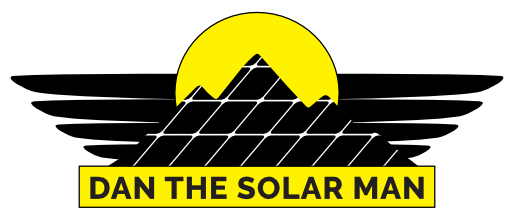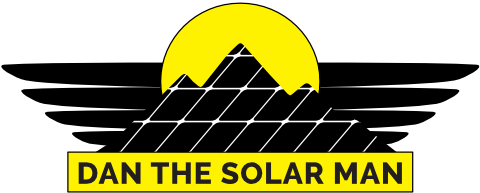Solar Systems & FAQs
Residential Systems
Off Grid Systems
Grid Connect Hybrid Systems
Frequently Asked Questions (FAQ)
Aside from the impact of cutting your household's carbon footprint by tonnes of greenhouse gas emissions a year, solar units can drastically reduce your electricity bill in two distinct ways.
Firstly, by generating your own electricity from the solar panels you reduce the electricity you need to buy from your power provider.
Secondly, any excess electricity your system produces can be sold back to the power provider. Note that this "feed-in tariff" varies greatly between providers and that you will need to research the best one for your situation.
Many households will be able to reduce their electricity costs considerably.
Another often overlooked benefit is that the solar units increase both the energy rating and value of your house.
Grid connect solar panel systems are connected to the electricity supply grid. An inverter converts DC low voltage power generated by the solar panels to 240V AC household supply.
The inverter also manages how much electricity is drawn from or fed back into the grid.
When your solar panels generate more electricity than you can use, electricity is fed into the grid, generating an income to offset the costs of when you draw power from the grid.
Yes, by reducing Australia's dependency on electricity generated from coal, we not only reduce CO2 emissions, we also reduce the demand on water that power companies require to generate this electricity. Currently 130 billion litres of drinking water is used just to generate coal-based electricity.
Furthermore, if more Australians installed solar panel systems it will reduce the stress on our electricity grid. This in turn will minimise the number of blackouts occurring during times of peak electricity use.
That depends on the system that you choose, we specialise in making sure that you only buy the system that is the best fit for you.
Thanks to the Government's Solar Credits scheme the cost to the customer is greatly reduced.
If you like a free quote, please start by filling in this form.
The amount of roof space required depends on the size of the system installed. For example, a 1.5Kw system requires about 12 square metres of roof space.
This should be on an un-shaded and preferably a north-facing part of the roof.
The system is modular and can therefore be arranged in a way that best suits the roof.
Yes, SA Regional Solar provides a 5 year warranty on the inverter, a 20 year manufacturer output warranty on the solar panels and a 5 year warranty on all other parts (e.g. wiring).
Contact SA Regional Solar immediately.
Yes, the solar panels are tested to and meet the standard IEC61215 and IEC61730 and the inverters all comply with standard AS/NZ4777.
Yes, all installers are licensed electricians and are accredited in Design and Installation of Photovoltaic systems by the Clean Energy Council.
We pride ourselves in doing the most professional job possible.
Solar Photovoltaic systems rely on sunlight and ultra violet rays, not heat.
So while there may be fewer hours of sunlight in winter, the actual conversion of power is unaffected by the change in season.
However, you will benefit from extended hours of sunlight in the summer.
There is no battery as the system is completely grid interactive. Battery systems are normally used with RAP (Remote Area Power) systems that have no grid connectivity.
However many customers are choosing to incorporate a battery for both redundancy and to store their self-generated power.
No. For safety reasons, when the normal supply of electricity is interrupted the solar units are also shut down.
However we can fit isolation switches if you require that way you may use battery or a generator in the event of a blackout.
When you install solar power, you are helping to reduce greenhouse gas emissions. This entitles you to create environmental credits called Small-Scale Technology Certificates or STCs for short. Renewable Energy Certificates, (RECs) was the original term, which was replaced by STCs in January 2011; however it is still an umbrella term covering both Small-scale and Large-scale certificates.
Like other commodities, the price of STCs is not fixed and varies with supply and demand. Prior to January 1st 2011 the price of Renewable Energy Certificates (RECs) would fluctuate daily. Now these commodities have been renamed Small-scale Technology Certificates and regulation has been put in place to stabilise their price. One STC equals 1MWh of generation from a renewable source and is part of the Mandatory Renewable Energy Target. This target is an industry development mechanism created by the Government in 2001. The government is going to be revising the Small-scale Renewable Energy Scheme in early July this year; therefore it is most important to have your system installed before prices go up.
Under the new RET (Renewable Energy Target); STCs may be traded to an electricity supplier for a point of sale discount on their renewable generation unit. Saving themselves is the value of the STCs generated. The new Solar Credits Scheme has been in operation since 2009 and households are entitled to claim five times the normal amount of STCs for the first 1.5Kw worth of supply.
STCs are based on zones that are set by the Office of the Renewable Energy Regulator. There are 4 zones based on how much sun a specific suburb gets with zone 1 being the sunniest down to zone 4.
There are 3 easy steps to solar
- Start by filling the free quote form and we'll follow up from there.
OR
- Phone us for a free quotation
- Let our solar consultants find the best system for you based on;
- Your budget
- Your electricity costs
- Your available roof space
- Let our solar consultants find the best system for you based on;
- Place an order
- We will verify your quote over the phone
- Place a deposit to order your solar system
- Installation
- Each solar system installed is approved by a registered solar designer
- Installation is conducted by an accredited BCSE installer within 3-6 weeks of deposit
- We will liaise with your electricity distributor and retailer to install your bi-directional solar smart meter.
Too expensive? Ask us about our interest free finance options!
3 to 4 hours depending on system size.
Although it is optimal to install solar products on the north-facing side of a roof, it is also possible to install a solar PV system on the east or west facing side of a roof, as long as there is sufficient space. However, this will not produce the same results as a north facing installation. West is a better option than east.
For safety reasons, in the event of a blackout, your solar PV system will stop producing electricity. This safety measure is mandatory and has been put in place to protect anyone working on the blacked-out grid system. As soon as the grid is back online, your solar PV system's ability to generate will be restored.
As solar PV systems only produce electricity when they are exposed to sunlight, they do not produce electricity at night.
At night you will need another source, such as electricity from the grid or from your own battery storage.
We can help you design any complex system to to suit your needs.
Australia is world famous for its sunny climate however we do not always best use our abundance of sunlight.
Sunlight is a natural clean energy resource and once you pay the initial outlay for the solar system to be installed all the electricity you collect is absolutely free.
Your solar system lifespan is over 25 years so imagine how much it could reduce your household running costs over this time.
Roof mounting systems can be installed to angle your solar panels at an adequately slanted position so that they can still collect the maximum electricity from the sun.
Like us to give you a free quote?
Please click the button to the right and fill in the form to request a free quote.

